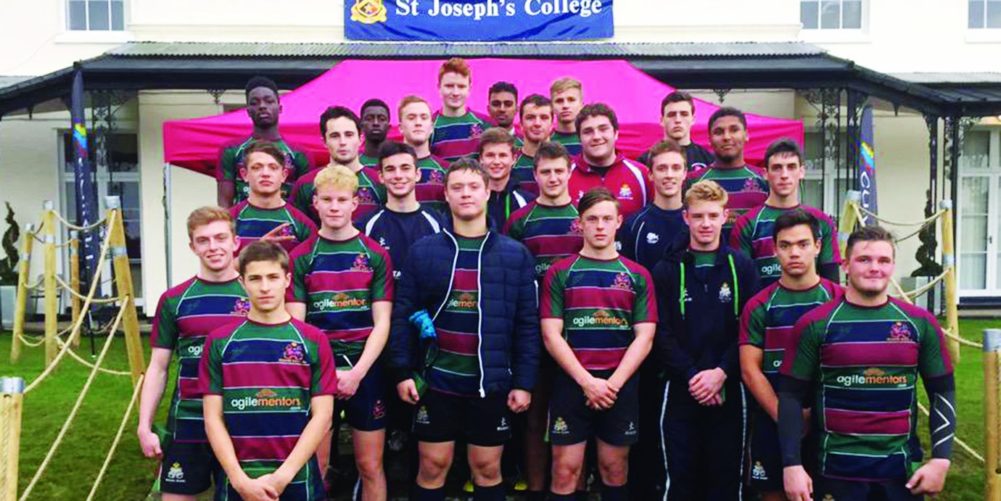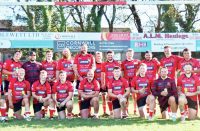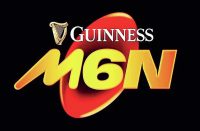Brendan Gallagher continues his series looking at rugby’s great schools

IT can be tough work competing against the great private, fee-paying rugby schools of the realm but over the decades few have done it better than RGS High Wycombe. Dedication, spirit de corps and raw talent can still get you a long way as RGS have repeatedly shown.
Occasionally there will be blips, a year or successive years that just don’t have sufficient talent but that comes with the territory with state schools. They can’t offer sporting scholarships but still RGS have somehow contrived to be at the sharp end of national tournaments more years than most.
On no fewer than eight occasions they have reached prestigious Daily Mail or NatWest Cup finals at the two age levels and they have been a constant animating presence at the St Joseph’s Festival, winning in 1999 and losing to Hampton in the 2015 final.
The late Nick Duncombe was the player of the tournament in 1999 while Christian Wade starred in three tournaments and took the try of the tournament in 2007. Italy’s Tomasso Allen is another who made his name playing for RGS at St Joseph’s between 2009-11.
RGS have a habit of producing distinctive spark players. In modern times they have also spawned England and Lions scrum-half Matt Dawson and another Lion in Nick Beale, who scored a hat-trick in the midweek game against the Junior Springboks in 1997. Both were also members of the England side that won the World Sevens Cup in 1993.

Tom Rees, alas forced to retire early through a chronic knee injury, was another star man and First XV captain at the school while others who have emerged into the professional game include full-back Chris Elder, flanker Jack Wallace and back five forward Christian Scotland-Williamson.
The rugby dynasty at RGS was arguably founded by former England wing Ted Woodward, who was the grandfather of Jack Wallace. Woodward was a formidable all-round athlete and at 6ft 3ins and 15 stones, massive for his time for a wing.
Woodward, from Lane End in Buckinghamshire, arrived at the school as a footballer but was so obviously built for rugby that he soon fully embraced the sport. He started as a prop on account of his size and impressive physique but his raw speed – he became the England Schools U17 100 yard champion – soon saw him moved out to the wing from where he captained the England Schools XV.
Woodward’s master in charge of rugby was Ron Emery, a Harlequins player, but it was Neville Compton at Wasps who noted his talent first and invited him to play for Wasps at the 1948 Middlesex Sevens as a 17-year-old schoolboy. In best comic book fashion he obliged with three tries in the final against Harlequins.
Soon after leaving school Woodward won the first of his 15 caps and following the premature death of his father, which saw him take over the family butcher’s, he became famed as the England wing who had to open up his shop early on Saturday mornings to serve a queue of customers before racing off to play for Wasps or England.
Woodward scored six tries for England but started to encounter serious hamstring problems and dropped out of contention in 1956 aged just 25. He later made a comeback with Wasps where he trundled around at No.8 which didn’t stress his piano wire hamstrings quite so much.
An exact contemporary and best friend of Woodward at RGS was Ron Syrett, who was also to become his brother-inlaw. Both starred in the First XV and First XI and, like Woodward, Syrett joined Wasps who he also represented at the Middlesex Sevens while still at school. Being a blindside wing forward he took rather longer to work his way into the England team and was eventually selected in 1958 when he won the first of his 11 caps.
Slightly later came another RGS man who played for Wasps and England – Clive Ashby, the first of the school’s Test scrumhalves. Ashby won three caps in 1966-67 and was rather unlucky to be dropped after that final appearance in 1967 when he went well in an outclassed team against Australia – indeed he scored England’s only try and enjoyed a fine tussle with Ken Cathchpole, arguably the world’s best nine at the time.
Later still came Dawson, who like Woodward, arrived at the school as a wannabe footballer and spent a couple of seasons with the Chelsea Academy before he saw the light! Dawson was an outstanding schoolboy player and despite missing the best part of a year with a serious knee injury featured strongly in the England Schools XV of 1989-90.
Dawson got to captain England on occasions and for much of his career openside flanker Tom Rees was tipped as a future England captain but injury was to thwart him in that respect, though he still won 15 caps and can look back on a Heineken Cup title with Wasps and Premiership title, when he scored the winning try in the 2008 final against Leicester.


The School’s long and distinguished participation in the Daily Mail and then NatWest competitions started in 1989 when they lost to Rossall in the U15 final but it was three outstanding U15 teams in succession in the mid-90s that cemented their reputation.
They beat Wellington College in the 1996 final, Whitgift the following year and then drew with QEGS Wakefield and shared the trophy in 1998. Unsurprisingly given that freakish gathering of high quality and committed players they quickly became a force at U18 level reaching the final in 1998 and 1999, but on both occasions they ran into the all-singing, alldancing Colston’s at Twickenham. In any other era you fancy RGS would have gone home from Twickenham with some silverware for their troubles.
There was further success though at U15 level in 2011 when they defeated Truro College in the final and the following year they again reached Twickenham but lost to Leeds GS.
As before, all that talent found an outlet at U18 level but again it was a case of right team, wrong time, when in the 2013-14 season they ran into another of the outstanding post-war school sides in Dulwich, who nonetheless had to dig very deep indeed to beat RGS High Wycombe 7-3 in a tense semi-final.























